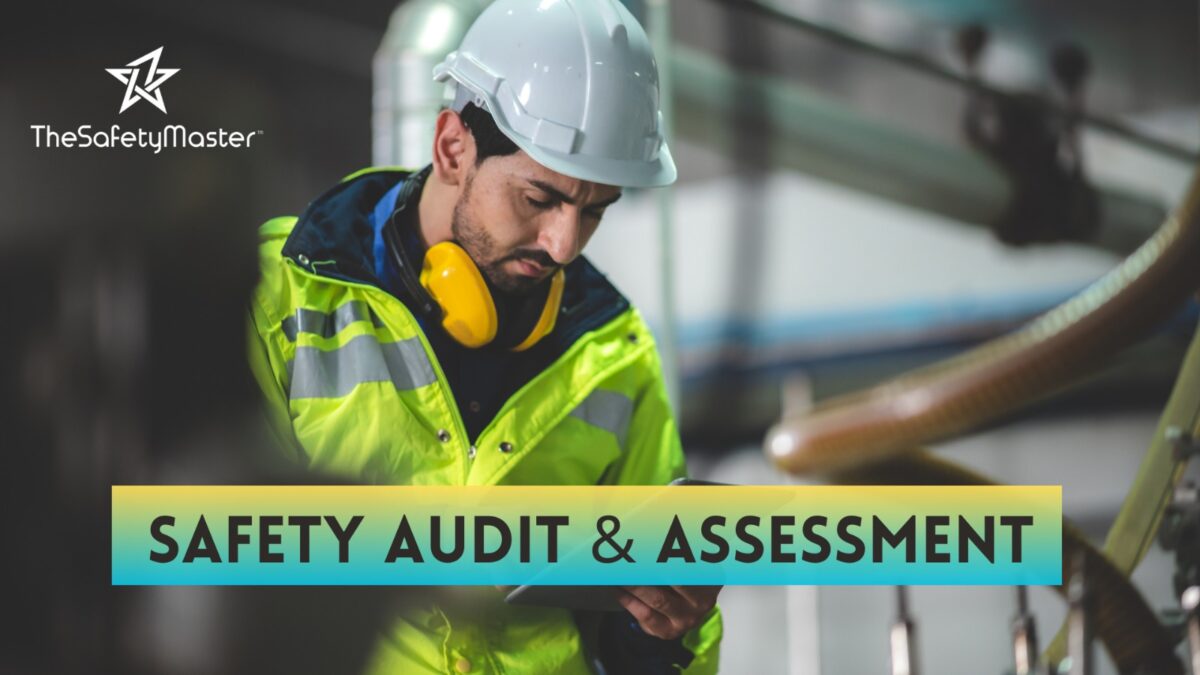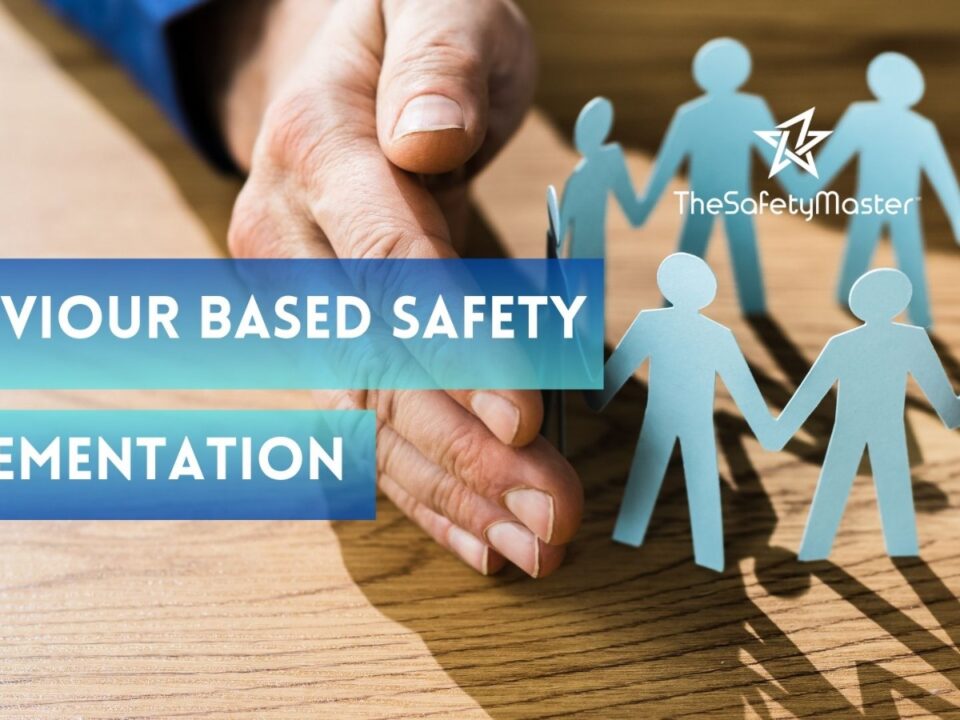Evaluating Safety Performance: How Safety Audits Benefit Indian Industries for Sustainable Growth

Residual Life Assessment for Electrical Equipment & Fire Pump Performance Testing Services
November 16, 2024
Understanding the Significance of Organizational Behaviour in the Context of Behaviour-Based Safety Implementation
November 18, 2024In this article, we delve into the crucial topic of safety performance evaluation in Indian industries and shed light on the undeniable benefits of safety audits. With a focus on sustainable growth, we aim to address the pressing problem of safety lapses that often plague our industrial sectors. By highlighting the importance of comprehensive safety audits, we guide readers towards a better understanding of how these evaluations can ensure safer working environments and pave the way for long-term success. Join us as we uncover the untapped potential and promise a brighter future for Indian industries. Together, let’s explore the realm of safety audits and unlock a world of sustainable growth.
Introduction
Industrial safety is a paramount concern for organizations operating in India’s bustling industries. With rapid growth and development, ensuring a safe and secure work environment has become more crucial than ever. The unfortunate reality is that workplace accidents and incidents can have devastating consequences, affecting not only the physical well-being of employees but also impacting productivity, reputation, and overall business sustainability. In this article, we delve into the world of safety audits and explore how they can significantly benefit Indian industries in their pursuit of sustainable growth. Safety audits provide a comprehensive evaluation of an organization’s safety performance, allowing businesses to identify potential hazards, mitigate risks, and enhance their overall safety culture. By conducting regular audits and addressing findings effectively, companies can demonstrate their commitment to employee well-being while fostering an environment conducive to productivity and success
Importance of Safety Audits in Indian Industries
Safety audits play a pivotal role in ensuring the well-being of Indian industries and driving sustainable growth. In the dynamic landscape of today’s business environment, safety is not merely a legal obligation but an essential pillar for success. By evaluating safety performance through regular audits, companies can proactively identify and address potential hazards, mitigate risks, and create a secure work environment for their employees. Moreover, safety audits instil a culture of accountability that fosters employee engagement and productivity. In Indian industries, where rapid expansion and technological advancements are prevalent, safety audits serve as a crucial tool for assessing compliance with laws and regulations. These audits ensure that organizations adhere to occupational health and safety standards set by regulatory bodies. By doing so, companies not only meet legal obligations but also demonstrate their commitment to safeguarding the welfare of their workforce.
Additionally, safety audits enable Indian industries to evaluate their current safety management systems comprehensively. Through meticulous examination of policies, procedures, training programs, and incident investigation processes, companies can identify areas that require improvement or refinement. This proactive approach allows businesses to rectify deficiencies promptly while promoting continuous enhancement of workplace safety practices.
By prioritizing safety audits, Indian industries create an environment where accidents and incidents are minimized significantly. These evaluations assist in identifying potential hazards within the workplace such as faulty machinery or inadequate protective equipment. By successfully mitigating such risks through corrective actions derived from audit findings, organizations can prevent workplace accidents and ensure the overall well-being of their employees.
In summary, prioritizing safety audits is essential for Indian industries aiming for sustainable growth. Such evaluations promote legal compliance while fostering a culture of accountability among employees. By identifying risks and implementing necessary improvements based on audit findings, businesses create safer work environments that ultimately contribute to enhanced productivity and overall success.
Understanding Safety Performance Evaluation
Understanding Safety Performance Evaluation: Within the realm of occupational safety, evaluating safety performance is a critical endeavour for Indian industries to ensure the well-being of their employees and sustainable growth. Safety performance evaluation involves assessing various aspects related to workplace safety, such as compliance with regulations, effectiveness of safety management systems, identification and management of hazards and risks, and mitigation of accidents and incidents.
To delve into safety performance evaluation, one must consider multiple dimensions. First, it entails monitoring the organization’s adherence to legal compliance and regulatory requirements. By conducting thorough audits and assessments, Indian industries can not only avoid penalties but also foster a culture that prioritizes employee welfare.
Additionally, understanding safety performance evaluation entails evaluating the effectiveness of an organization’s safety management systems. This involves assessing policies, procedures, training programs, and communication channels in place to manage occupational hazards effectively. Such evaluations provide valuable insights into areas for improvement and help identify best practices that can be adopted throughout the industry.
Lastly, safety performance evaluation encompasses identifying and managing hazards and risks within workplaces. By actively identifying potential dangers through risk assessments or incident investigations, organizations can implement appropriate control measures that minimize the likelihood of accidents or injuries occurring.
Overall, a comprehensive understanding of safety performance evaluation allows Indian industries to proactively address occupational risks while fostering a positive work environment that ensures the well-being of employees in pursuit of sustainable growth.
Key Elements of Conducting Safety Audits
A well-executed safety audit involves several essential elements that contribute to its effectiveness in evaluating safety performance within Indian industries. The first element is thorough planning, which entails defining the scope, objectives, and methodology of the audit. A comprehensive checklist should be developed to ensure all relevant areas are assessed. Secondly, competent auditors play a crucial role in conducting safety audits. These auditors possess extensive knowledge and experience in occupational health and safety regulations, industry best practices, and risk assessment methodologies. Their expertise allows for a meticulous examination of safety management systems and identification of potential hazards.
Furthermore, data collection is another vital element in conducting safety audits. Accurate information on incidents, near misses, workers’ feedback, and existing control measures must be gathered to provide a holistic view of the organization’s safety performance. This data serves as a foundation for identifying gaps and implementing targeted improvements.
Overall, by incorporating these key elements into the process of conducting safety audits within Indian industries, organizations can effectively evaluate their safety performance. This evaluation enables them to comprehensively assess their existing practices while fostering an optimistic approach toward continuous improvement in workplace safety culture.
Benefits of Safety Audits for Indian Industries
Benefits of Safety Audits for Indian Industries: Safety audits offer numerous advantages for Indian industries, contributing to their sustainable growth and the well-being of their workforce. Firstly, safety audits provide a comprehensive evaluation of the existing safety management systems, identifying areas that require improvement. By pinpointing weaknesses and vulnerabilities, companies can take proactive measures to rectify them and ensure a safer working environment.
Furthermore, safety audits help in mitigating workplace accidents and incidents by identifying potential hazards and risks. This allows organizations to implement preventive measures promptly, reducing the chances of accidents occurring. By addressing these risks proactively, companies can protect their employees from harm while minimizing financial losses associated with workplace incidents.
Moreover, safety audits foster a culture of continuous improvement within organizations. The regular evaluation and assessment of safety performance instil an ongoing commitment to enhancing workplace safety practices. This leads to increased employee morale and satisfaction as they feel valued and protected by their employers. Ultimately, such positive work environments promote higher productivity levels and foster sustainable growth for Indian industries as they attract skilled workers seeking secure employment opportunities.
Enhancing Workplace Safety Culture through Auditing
Enhancing Workplace Safety Culture through Auditing: The process of conducting safety audits plays a pivotal role in fostering a robust and positive safety culture within Indian industries. By systematically evaluating the safety performance of an organization, auditing helps to establish a strong foundation for a proactive approach towards workplace safety. Audits provide an opportunity for employees at all levels to actively engage in identifying potential hazards, improving safety protocols, and promoting a sense of ownership towards creating a safe working environment.
Through regular auditing, employees become more aware of the importance of adhering to safety guidelines and procedures. This fosters a culture where safety is not just seen as a compliance obligation but rather as an integral part of daily operations. As employees actively participate in the audit process, they develop a deeper understanding of potential risks and are empowered to propose innovative solutions. This collaborative approach cultivates an atmosphere where everyone feels responsible for maintaining high safety standards.
Furthermore, by emphasizing workplace safety through audits, organizations demonstrate their commitment to protecting their most valuable asset – their employees. When workers feel valued and secure in their jobs, productivity increases along with overall job satisfaction. Safety audits serve as an effective tool for instilling confidence among employees that their well-being is paramount to the organization’s success. This positive reinforcement fosters motivation, dedication, and loyalty among the workforce, resulting in improved morale and increased effectiveness across all levels of the organization.
Overall, enhancing workplace safety culture through auditing not only safeguards employees from potential harm but also creates an environment rooted in trust and collaboration. By prioritizing employee welfare through thorough evaluations and continuous improvement initiatives driven by audits, Indian industries can ensure sustainable growth while fostering contentment within their workforce.
Addressing Legal Compliance and Regulatory Requirements
Addressing Legal Compliance and Regulatory Requirements: In the realm of safety audits, one crucial aspect is ensuring that organizations are fully compliant with legal and regulatory requirements. This entails carefully examining the existing laws, regulations, and industry-specific standards that govern workplace safety. By conducting thorough audits, companies in Indian industries can proactively identify any gaps or deficiencies in their compliance efforts.
With a spirited commitment to adhering to legal obligations, organizations can foster a culture of responsibility and trust. By going above and beyond mere compliance, they demonstrate their dedication to providing a safe working environment for their employees. Moreover, this approach helps build confidence among stakeholders such as customers, partners, and investors who value the ethical and responsible practices embraced by these organizations.
By prioritizing legal compliance through safety audits, Indian industries pave the way for sustainable growth while simultaneously making positive contributions to society at large. Embracing these requirements not only safeguards the well-being of employees but also upholds societal values by creating a harmonious work environment where individuals can thrive without compromising their safety. Ultimately, this commitment to meeting regulatory standards fosters a culture of continuous improvement and sets the stage for long-term success in ensuring workplace safety within Indian industries.
Evaluating Safety Management Systems
Evaluating Safety Management Systems: A robust and well-functioning safety management system forms the backbone of any organization’s commitment to workplace safety. It encompasses the policies, procedures, and practices implemented to identify, assess, control, and monitor risks within the organization. By conducting safety audits, Indian industries can effectively evaluate the effectiveness of their safety management systems.
During the evaluation process, auditors meticulously assess the various components of a safety management system. This includes scrutinizing documentation such as policies and procedures manuals, reviewing training records to ensure proper employee education on safety protocols, and examining incident reporting systems for timely identification and resolution of safety issues.
By conducting regular audits of their safety management systems, Indian industries can identify areas for improvement and implement corrective actions promptly. This proactive approach not only enhances workplace safety but also fosters a culture that prioritizes employee well-being. Ultimately, a strong safety management system fosters trust among employees which positively impacts productivity and overall organizational success.
Identifying and Managing Hazards and Risks
The identification and management of hazards and risks within Indian industries is a crucial aspect of ensuring workplace safety. Hazards can be defined as potential sources of harm, while risks are the likelihood and severity of an incident occurring. Safety audits play a significant role in identifying these hazards and assessing the associated risks, enabling organizations to implement effective control measures. During safety audits, trained professionals meticulously scrutinize every aspect of the workplace to identify potential hazards. These hazards may include unsafe machinery or equipment, inadequate ventilation systems, chemical storage without proper measures, or lack of personal protective equipment. By assessing the likelihood and severity of these risks, organizations can prioritize their efforts to mitigate them effectively.
Managing hazards and risks is a continuous process that requires proactive measures such as implementing engineering controls, providing adequate training to employees, establishing safety protocols, and conducting regular inspections. By addressing these factors through safety audits, Indian industries can create safer work environments that not only protect employees but also contribute to enhanced productivity and overall organizational success.
Mitigating Workplace Accidents and Incidents
Mitigating Workplace Accidents and Incidents: In the quest for sustainable growth, Indian industries must prioritize the mitigation of workplace accidents and incidents. Safety audits play a pivotal role in identifying potential hazards and risks that could lead to such unfortunate events. By conducting regular audits, organizations can proactively address unsafe conditions, implement corrective measures, and promote a culture of safety among employees.
Safety audits provide an opportunity to identify common workplace accidents, such as slips, trips, falls, or machinery-related incidents. Through comprehensive assessments, potential hazards like inadequate signage or poorly maintained equipment can be detected and rectified promptly. By mitigating these risks effectively, companies can significantly reduce the occurrence of accidents and create a safer working environment for their workforce.
Furthermore, safety audits catalyze continuous improvement in accident prevention strategies. By analysing incident data from previous audits and implementing lessons learned into revised safety protocols, organizations can continually enhance their preventive measures. This iterative approach fosters a positive environment that encourages employees to actively participate in safety initiatives while instilling confidence in their well-being at work.
Remember: A proactive approach to mitigating workplace accidents not only safeguards the physical health of employees but also contributes to increased productivity and overall organizational success.
Continuous Improvement and Ongoing Safety Audits
Continuous Improvement and Ongoing Safety Audits: As the old adage goes, “Safety is not a destination, but a journey.” Once an initial safety audit has been conducted, it is critical for Indian industries to embrace continuous improvement through ongoing safety audits. These subsequent audits serve as checkpoints to evaluate the effectiveness of implemented safety measures and identify any emerging hazards or risks.
By consistently engaging in safety audits, organizations can maintain a proactive approach towards workplace safety. These audits offer an opportunity to review and update safety policies and procedures, ensuring they align with industry best practices. Moreover, ongoing audits help foster a culture of continual learning and improvement within the workforce, encouraging employees to actively contribute their insights and suggestions for further enhancing safety protocols.
In addition to identifying areas for improvement, ongoing safety audits also demonstrate an organization’s commitment towards employee well-being and sustainability. They send a powerful message that workplace safety is not simply a one-time initiative but an ongoing priority. This message boosts employee morale, instils confidence in the organization’s leadership, and reinforces a sense of pride among individuals who are part of an environment that genuinely cares about their welfare.
In summary, continuous improvement through ongoing safety audits empowers Indian industries to stay ahead of potential hazards while fostering positive growth. By treating workplace safety as an ever-evolving process rather than a static goalpost, organizations can create safer work environments that prioritize the well-being of their employees while driving sustainable success.
Conclusion
In conclusion, the implementation of safety audits in Indian industries is a crucial step towards achieving sustainable growth. By evaluating safety performance, organizations can identify and address potential hazards, improve their safety management systems, and comply with legal regulations. Through these audits, workplaces can cultivate a culture of safety that prioritizes the well-being of employees and mitigates the occurrence of accidents or incidents. As Indian industries embrace the principles of safety auditing, they pave the way for a brighter future where business prosperity and employee welfare go hand in hand. Remember, fostering a safe work environment is not just an obligation; it is an opportunity to create a harmonious workplace that propels both individuals and organizations towards success.




